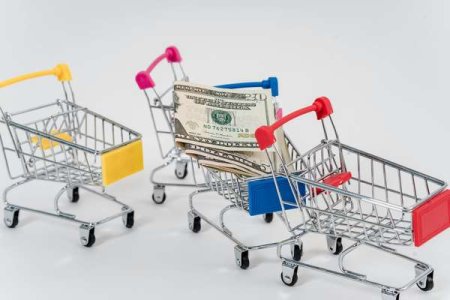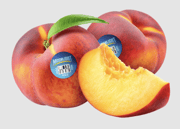Walmart & Dollar Tree Shoppers: Check Your Bills Now to Avoid Payment Issues!
By
Aubrey Razon
- Replies 0
In the hustle and bustle of our daily errands, we often overlook the small details that can make or break our shopping experience. For frequent visitors of Walmart and Dollar Tree, there's a new rule in town that demands your attention—unless you want to face a payment dilemma at the checkout line.
It's time to take a closer look at the cash in your wallet. Major retailers, including Walmart and Dollar Tree, are tightening their policies on the condition of banknotes they accept.
The reason? A growing concern over damaged and counterfeit currency that's infiltrating the market.
The bills that might get you a frown from the cashier include those that are torn, excessively worn, or missing corners. Discolored notes are also under scrutiny. So, if you're holding onto that half-torn dollar bill for sentimental reasons, it might be time to let go.
The Bureau of Engraving and Printing defines mutilated currency as notes that have been compromised by fire, water, chemicals, or other extreme conditions. While these bills might hold memories, they won't hold up at the register.
Don't fret if you find a damaged bill crumpled in your purse or pocket. These notes haven't lost all their value. You can take your unfit or mutilated currency to banks nationwide, where they can be exchanged for crisp, new bills that won't cause a hiccup when you're buying your groceries.
The issue isn't just about damaged dollars; it's also about deceitful ones.
Treasury experts estimate that there's a staggering $70 million to $200 million in counterfeit currency circulating in the U.S. economy. This fraudulent money doesn't just hurt businesses—it undermines the very integrity of our financial system.
Ashley Tokoi of the Riley County Police Department highlighted the gravity of the situation, stating that counterfeit bills “pose a significant threat to the community” and can erode trust in local economies.
The U.S. Secret Service offers a comprehensive guide to help you understand the nuances of your currency. If you suspect you've encountered counterfeit money, report it to your local police department immediately.
Remember, a little attention to detail can go a long way in ensuring a smooth and successful shopping trip. So next time you're at Walmart or Dollar Tree, make sure your bills pass the test, and keep those payment nightmares at bay!

Have you encountered any issues with damaged or counterfeit bills? Do you have any tips for quickly checking the authenticity of your currency? Share your experiences and advice in the comments below.
It's time to take a closer look at the cash in your wallet. Major retailers, including Walmart and Dollar Tree, are tightening their policies on the condition of banknotes they accept.
The reason? A growing concern over damaged and counterfeit currency that's infiltrating the market.
The bills that might get you a frown from the cashier include those that are torn, excessively worn, or missing corners. Discolored notes are also under scrutiny. So, if you're holding onto that half-torn dollar bill for sentimental reasons, it might be time to let go.
The Bureau of Engraving and Printing defines mutilated currency as notes that have been compromised by fire, water, chemicals, or other extreme conditions. While these bills might hold memories, they won't hold up at the register.
Don't fret if you find a damaged bill crumpled in your purse or pocket. These notes haven't lost all their value. You can take your unfit or mutilated currency to banks nationwide, where they can be exchanged for crisp, new bills that won't cause a hiccup when you're buying your groceries.
The issue isn't just about damaged dollars; it's also about deceitful ones.
Treasury experts estimate that there's a staggering $70 million to $200 million in counterfeit currency circulating in the U.S. economy. This fraudulent money doesn't just hurt businesses—it undermines the very integrity of our financial system.
Ashley Tokoi of the Riley County Police Department highlighted the gravity of the situation, stating that counterfeit bills “pose a significant threat to the community” and can erode trust in local economies.
How to Spot a Fake
Before you head out to the stores, it's wise to perform a few simple checks to ensure your bills are the real deal. Here are some red flags and verification tips:- Raised Printing: Genuine banknotes have a distinctive texture. If the printing feels flat, be wary.
- Watermarks: Hold the bill up to a light source. A legitimate note will have a watermark that's visible from both sides.
- Microprinting: Grab a magnifying glass and look for tiny text that's difficult to replicate.
- Serial Numbers: Check for consistency in color and spacing. Each bill's serial number should be unique.
- Colored Fibers: Real bills have tiny red and blue fibers embedded in the paper.
The U.S. Secret Service offers a comprehensive guide to help you understand the nuances of your currency. If you suspect you've encountered counterfeit money, report it to your local police department immediately.
Remember, a little attention to detail can go a long way in ensuring a smooth and successful shopping trip. So next time you're at Walmart or Dollar Tree, make sure your bills pass the test, and keep those payment nightmares at bay!
Key Takeaways
- Walmart and Dollar Tree shoppers are being urged to check their banknotes for damage before using them to avoid payment issues at checkouts.
- Damaged currency includes notes that are torn, missing corners, or discolored, and major retailers may not accept them.
- The Bureau of Engraving and Printing states mutilated currency can be exchanged at banks, and the Treasury has detected a significant amount of counterfeit currency in circulation.
- The Secret Service provides guidelines to identify counterfeit bills, and shoppers are advised to report any suspect currency to their local police force.







